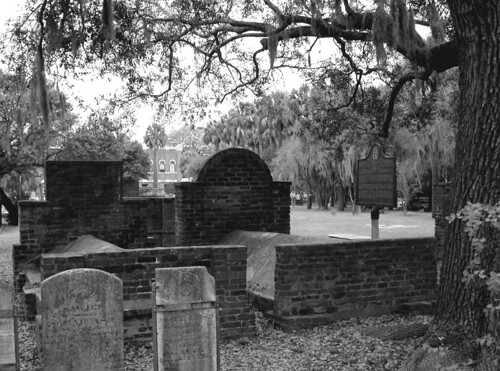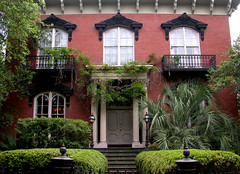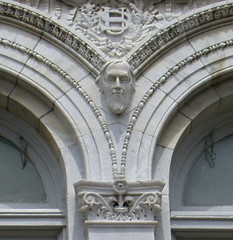
SAVANNAH, Ga. – Often called the “Belle of the South” because of its charm, Savannah probably wasn’t “too beautiful” to burn when union troops stormed the Confederate states at the close of the Civil War.
The city then looked much like most dusty cotton towns along the Atlantic Coast south of the Mason-Dixon Line, which separates the North and South, a guide told tourists on one of the modern city’s popular historic walking tours.
Savannah folks received word that Gen. William Tecumseh Sherman was heading their way after his troops burned Atlanta to the ground in November 1864 in his “March to the Sea” campaign.
Everyone fled for their safety, including the men who had the messy job of removing the many piles of horse manure that littered the streets. Not only was Savannah average, it’s air must have contained a foul odor when Sherman arrived because he decided to spare the city from ruin, the guide said.
The general would later write about Savannah as having been “far too beautiful a city to burn.”
The general, the guide explained, was likely putting a spin on the story to the mainstream press, which moved slowly on horseback or by stagecoach in 1865 because many of the South’s railways had been destroyed in the fighting. The reporters had begun to catch up with Sherman’s troops when they arrived in Savannah.
Some had already published reports of the travesties the soldiers committed in Atlanta. Southerners were growing angrier by the day over how the soldiers had ripped up railroad tracks, wrapping some around tree trunks like pretzels. Even the newly freed slaves were upset with Sherman for the way his followers had been treating them, the guide said.
Regardless of which story is accurate, those who have inherited the city are blessed with an urban historic district whose beauty is unmatched in the United States.
The city had the fortune of being discovered by Oxford-educated James Oglethorpe and 21 other Englishmen who settled Georgia to maintain their homeland’s stake in the 13 colonies.
Laid out in 1733, Oglethorpe gave the city a new design of streets and alleys offset by six 60-foot-by-90-foot squares that was uncommon to colonial America. There would be a 44 acre farm shared by landowners on the outside of the town. As the city grew and gobbled up the farm, city planners continued laying out streets with the same pattern of public squares.
Today, these impeccably maintained parks are home to historic markers, statues and ornate fountains under the shade of tall “live oak trees draped in Spanish moss.” The streets also are lined by row after row of stately brick houses with richly adorned secret gardens.

In 2005, the city attracted more than 6 million visitors who, combined, spent more than $1.7 million, according to Georgia Trend magazine. The tourism boom is largely based on the heritage trade, which has spoken volumes to the value of historic preservation.
The Civil War walking tour, meanwhile, passed the stately home of Jim Williams, whose scandalous murder trial became the inspiration for the best-selling book, “Midnight in the Garden of Good and Evil.” Tourists also flock there for walking tours of the house and other sites associated with Williams, an antiques dealer who was acquitted on charges he shot and killed his male lover.

Our guide also stopped at the stately post office, which holds a tiny sculpture of President Lincoln peering down from above two second-story windows. The massive marble and granite building was a gift to the city during the reconstruction era that followed the Civil War.
Its architect was believed to have incorporated Lincoln’s face into the building as a reminder that the president would “always be looking down on us,” the guide explained.

Published with permission of the Observer-Reporter

2 comments:
I don't think that's Lincoln. If it is it would've been the only likeness of Lincoln in town.
Now that you mention it, it doesn't look a whole lot like Lincoln. Darn that tour guide if he made up the story. Who do you think it is?
Post a Comment